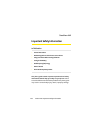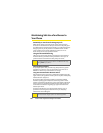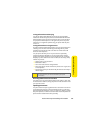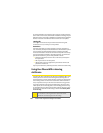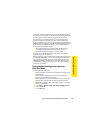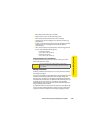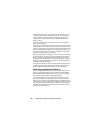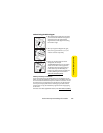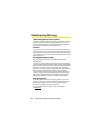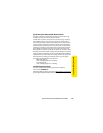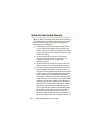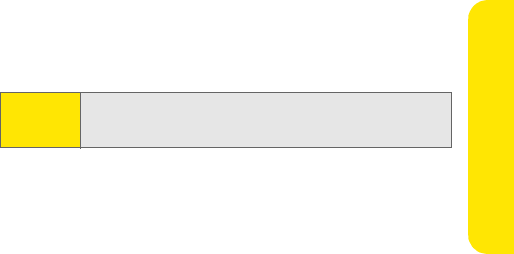
Section 4A: Important Safety Information 185
Important Safety Information
ⅷ Never dispose of the battery by incineration.
ⅷ Keep the metal contacts on top of the battery clean.
ⅷ Don’t attempt to disassemble or short-circuit the battery.
ⅷ The battery may need recharging if it has not been used for a long
period of time.
ⅷ It’s best to replace the battery when it no longer provides acceptable
performance. It can be recharged hundreds of times before it
needs replacing.
ⅷ Don’t store the battery in high temperature areas for long periods of
time. It’s best to follow these storage rules:
Ⅲ Less than one month:
-4° F to 140° F (-20° C to 60° C)
Ⅲ More than one month:
-4° F to 113° F (-20° C to 45° C)
Disposal of Lithium Ion (Li-Ion) Batteries
For safe disposal options of your Li-Ion batteries, contact your nearest
Sprint authorized service center.
Battery Information
For battery installation and replacement, see “Using Your Phone’s Battery
and Charger” on page 20.
Your device is powered by a rechargeable battery. The full performance of a
new battery is achieved only after two or three complete charge and
discharge cycles. The battery can be charged and discharged hundreds of
times but it will eventually wear out. When the talk and standby times are
noticeably shorter than normal, buy a new battery. Use only Nokia-
approved batteries, and recharge your battery only with Nokia-approved
chargers designated for this device.
If a replacement battery is being used for the first time or if the battery has
not been used for a prolonged period, it may be necessary to connect the
charger then disconnect and reconnect it to begin charging the battery.
Note:
Be sure to dispose of your battery properly. In some areas,
the disposal of batteries in household or business trash may
be prohibited.




